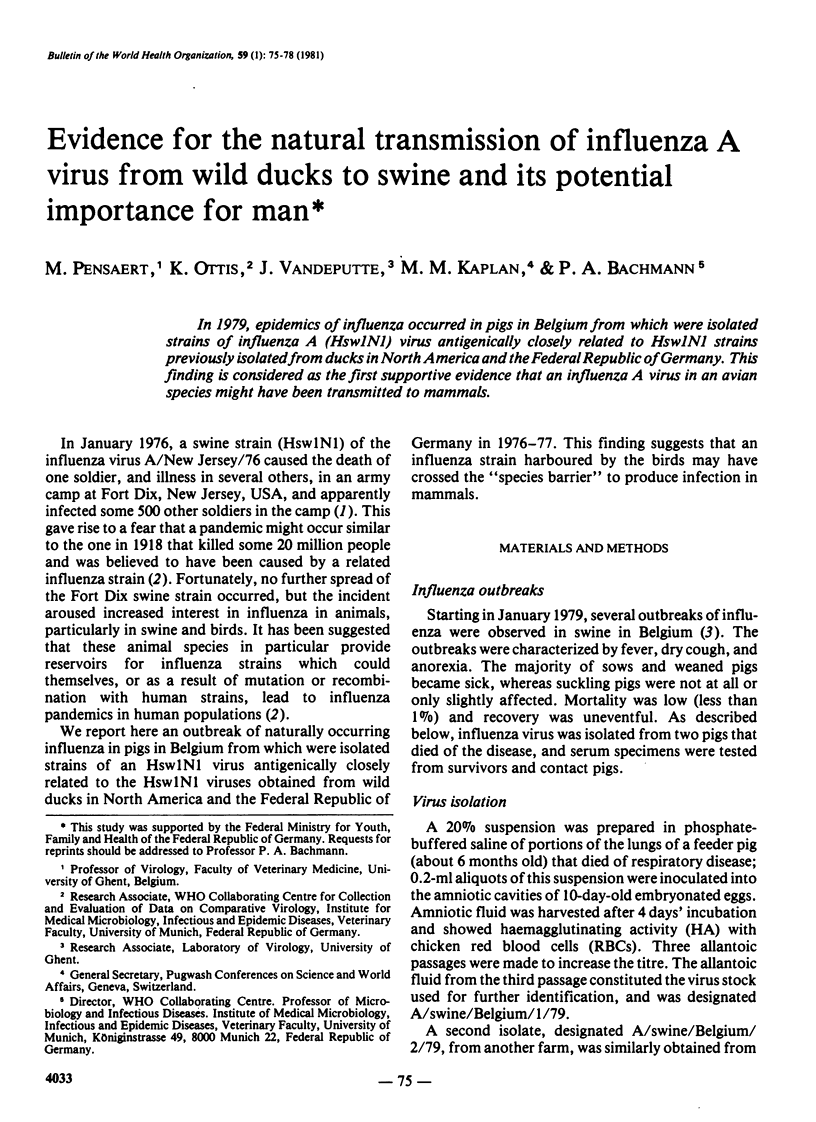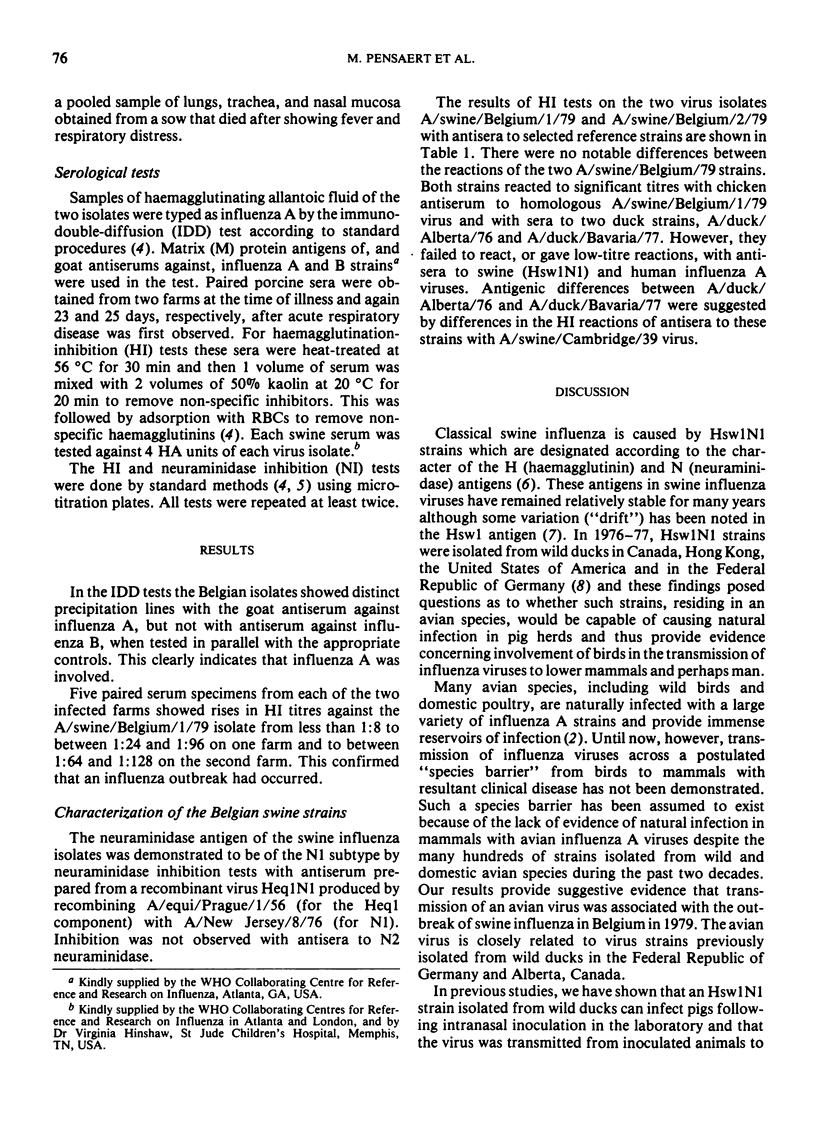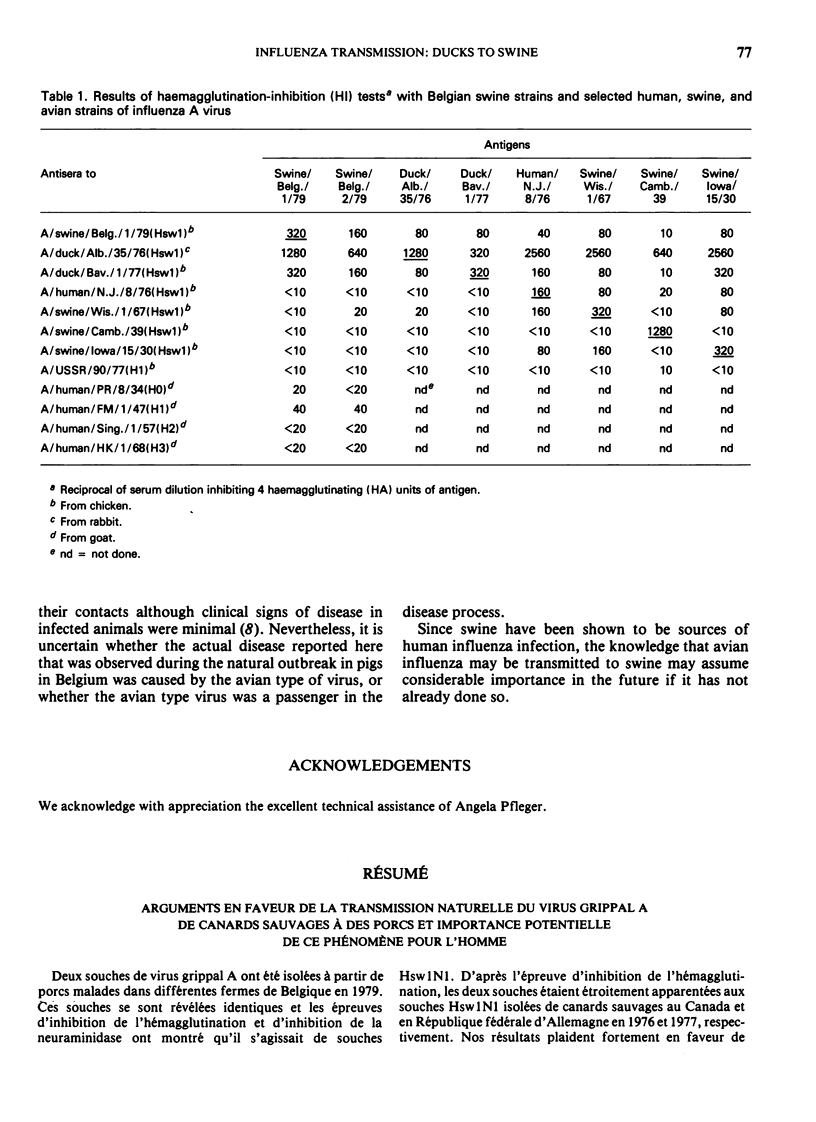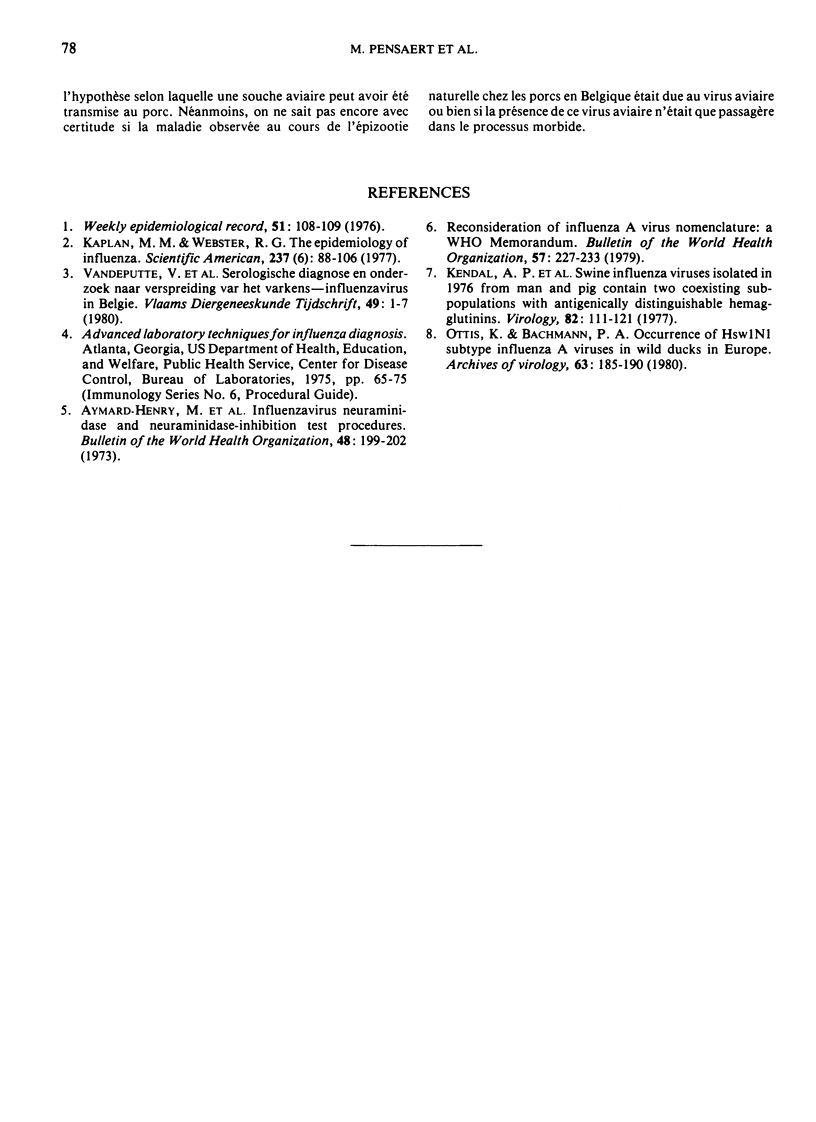Abstract
In 1979, epidemics of influenza occurred in pigs in Belgium from which were isolated strains of influenza A (Hsw1N1) virus antigenically closely related to Hsw1N1 strains previously isolated from ducks in North America and the Federal Republic of Germany. This finding is considered as the first supportive evidence that an influenza A virus in an avian species might have been transmitted to mammals.
Full text
PDF



Selected References
These references are in PubMed. This may not be the complete list of references from this article.
- Aymard-Henry M., Coleman M. T., Dowdle W. R., Laver W. G., Schild G. C., Webster R. G. Influenzavirus neuraminidase and neuraminidase-inhibition test procedures. Bull World Health Organ. 1973;48(2):199–202. [PMC free article] [PubMed] [Google Scholar]
- Kaplan M. M., Webster R. G. The epidemiology of influenza. Sci Am. 1977 Dec;237(6):88–106. doi: 10.1038/scientificamerican1277-88. [DOI] [PubMed] [Google Scholar]
- Kendal A. P., Noble G. R., Dowdle W. R. Swine influenza viruses isolated in 1976 from man and pig contain two coexisting subpopulations with antigenically distinguishable hemagglutinins. Virology. 1977 Oct 1;82(1):111–121. doi: 10.1016/0042-6822(77)90037-x. [DOI] [PubMed] [Google Scholar]
- Ottis K., Bachmann P. A. Occurrence of Hsw 1 N 1 subtype influenza A viruses in wild ducks in Europe. Arch Virol. 1980;63(3-4):185–190. doi: 10.1007/BF01315025. [DOI] [PubMed] [Google Scholar]


